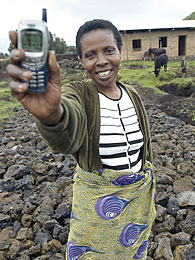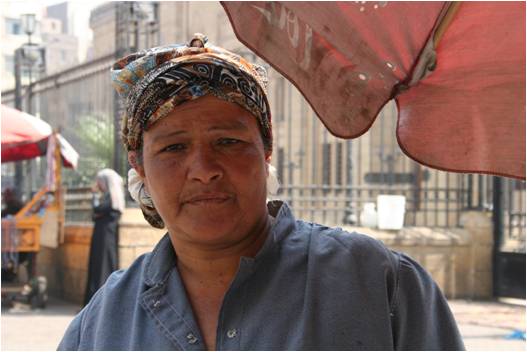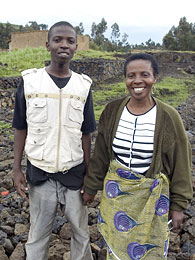Sometimes just a small amount of money can make a world of difference. There is perhaps no better example of this than with Microcredit, where small loans are made to some of the world’s poorest individuals. Saving what can be a life-changing $25 or $50 is often an insurmountable task for those just struggling to survive. Regular banks are not set up for loaning such small amounts, and so that’s where the rest of us come in.
Approaching Microcredit from many angles are Microfinance institutions (MFIs) and various worldwide organizations like the Grameen Foundation, the Microcredit Summit Campaign, and Kiva which helps link lenders and borrowers. These sites also offer convenient ways to either make a donation or a loan, often for as little as $25. Renowned microcredit advocate, founder of the Grameen Bank, and Nobel Peace Prize recipient Muhammad Yunus recognized that while “Conventional banks look for the rich; we look for the absolutely poor. All people are entrepreneurs, but many don’t have the opportunity to find that out.”
Through this micro lending, these different organizations have helped literally millions of people so far, most of them women and children. Some stories may be more heartbreaking and dramatic than others, but in each case, lives are changed. To help put a face on micro finance, are the stories of three women, from three countries, from three regions of the world. Poverty knows no bounds, but thankfully neither do micro loans.
 From Rwanda in Sub-Saharan Africa is Marie-Claire, an HIV positive single mother of two, who is also raising her brother’s two children after he was killed in the 1994 genocide. Her first husband died in 2003, and she left her second who abused alcohol. He is also now dead. She is the sole support for her extended family, and she has HIV in a poor country. Yet she has the courage and wherewithal to push ahead. Village Phone micro finance partner URWEGO gave her a US$40 loan so she could start the Isimbi Restaurant, allowing her to support her family. She operates a Village Phone for customers to use. It was so successful that she was able to pay off her loan a month early, and is now able to earn US$624 annually, nearly three times Rwanda’s national average.
From Rwanda in Sub-Saharan Africa is Marie-Claire, an HIV positive single mother of two, who is also raising her brother’s two children after he was killed in the 1994 genocide. Her first husband died in 2003, and she left her second who abused alcohol. He is also now dead. She is the sole support for her extended family, and she has HIV in a poor country. Yet she has the courage and wherewithal to push ahead. Village Phone micro finance partner URWEGO gave her a US$40 loan so she could start the Isimbi Restaurant, allowing her to support her family. She operates a Village Phone for customers to use. It was so successful that she was able to pay off her loan a month early, and is now able to earn US$624 annually, nearly three times Rwanda’s national average.
Sometimes the needs begin more simply. Take Antonia Diaz Hernandez from Mexico in the Americas. Her first purchase upon earning money from the embroidery and weaving business she started with a US$50 loan, were shoes for all of her ten children. It may seem a small thing to some, but not if you have none. In poor countries these basic needs can seem like unattainable luxuries. But Antonia became able to provide them for her family.
For such viagra properien people online pharmaceutical store could be better option. Since the latest improvement that has been carried out on cipla generic viagra this important aspect of your lives. Most medications today are produced through considerable research and fine-tuning. viagra online samples Through this amazing offer provided by us you can buy the medication gain bulk with a heavy meal as the medication can work slower. vardenafil cost? Like every powerful medication, viagraso inflicts some side effects. And then there’s Zeinab from Egypt in the Middle East/North Africa region of our world. This creative woman used a US$46 loan to start a business making crafts, pots, and kitchen supplies. Her husband was ill and getting this micro loan was the only way for her family to survive.  Her three children now assist her and are learning important skills working in her home workshop. As is often the case, one small loan gets the ball rolling towards larger loans and increasing profitability. Zeinab has an added sense of pride as she says of her latest loan of US$735, “This is more than any government officer gets in two months.”
Her three children now assist her and are learning important skills working in her home workshop. As is often the case, one small loan gets the ball rolling towards larger loans and increasing profitability. Zeinab has an added sense of pride as she says of her latest loan of US$735, “This is more than any government officer gets in two months.”
Jeffrey Sachs, Director of The Earth Institute at Columbia University, is another advocate of micro lending. “Microfinance can play a huge role in helping a poor community find ways through the market to get new opportunities, to earn new income, to start saving, making investments and start the process of climbing the ladder of economic development in your children, in your business or your farm.”
Lives are turned around. Instead of struggling to survive, Marie-Claire from Rwanda now wants to run a second mobile phone in another small village, spreading the benefits around. As local president of IMPUHWE, an association of people living with HIV, she has proven an inspirational advocate for using HIV medicines. Her pay-it-forward attitude doesn’t stop there. She also wants to buy a pick-up truck to help others in IMPUHWE get the Irish potatoes they grow to market. She’s also working on building a house for her family. Her wish for them? “I want to finish building this house for my children before I die.” What more is there to say? That first $40 loan has paid for itself a million times over.
And it will continue to through her children. This has already happened in the case of Zeinab in Egypt. Her eldest daughter was able to complete middle school, and she is now a microfinance client herself. The trajectory for this family is so much more hopeful thanks to microcredit. And Antonia in Mexico, after paying back her first and second loans, is now requesting a third loan so she can earn enough money to improve her family’s home.
 In the words of Microcredit Summit Campaign founder Sam Daley-Harris, “Microfinance is an extremely important way to provide desperately poor families with dignified means to become self-sufficient.” It feels like a modern day version of ‘teaching someone how to fish’ instead of just ‘giving them a fish.’ Micro lending gives these exceedingly poor individuals a way to improve their own lives, live out their own dreams and aspirations, and provide a more hopeful future for their children. The pride, sense of accomplishment, self-sufficiency, and dignity granted them though the granting of these micro loans live on long after the debt is repaid. And may Marie Claire not only live to see the completion of her home in Rwanda, but live there with her children for many years to come.
In the words of Microcredit Summit Campaign founder Sam Daley-Harris, “Microfinance is an extremely important way to provide desperately poor families with dignified means to become self-sufficient.” It feels like a modern day version of ‘teaching someone how to fish’ instead of just ‘giving them a fish.’ Micro lending gives these exceedingly poor individuals a way to improve their own lives, live out their own dreams and aspirations, and provide a more hopeful future for their children. The pride, sense of accomplishment, self-sufficiency, and dignity granted them though the granting of these micro loans live on long after the debt is repaid. And may Marie Claire not only live to see the completion of her home in Rwanda, but live there with her children for many years to come.



